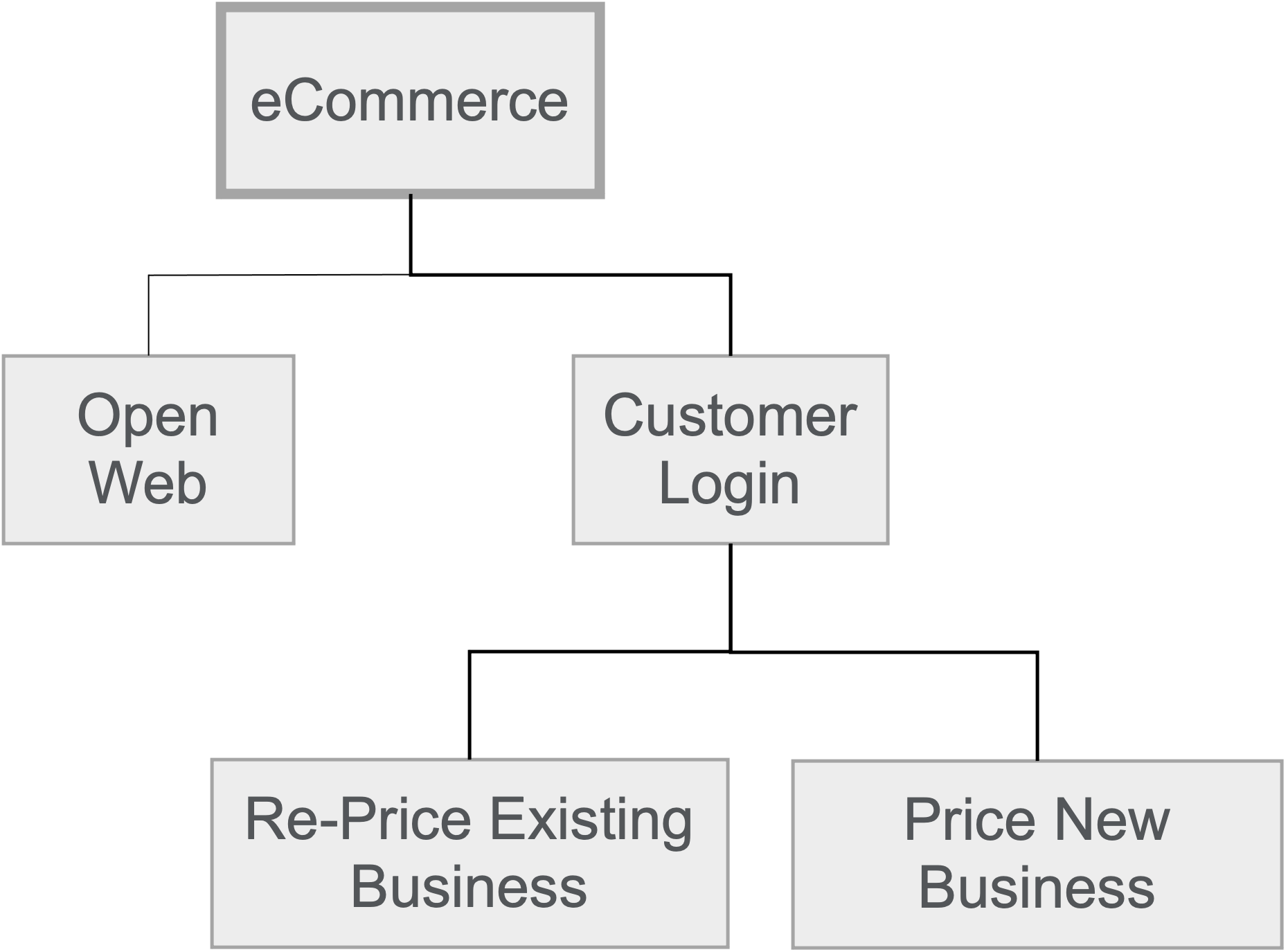It’s not enough to simply set up a web shop for your customers. B2B buyers expect a consumer-like eCommerce and omnichannel experience, with serious implications and complications for pricing. A thoughtful approach and next-gen tools are required to meet modern competitive demands.
How Does eCommerce Demand Impact Pricing Decisions?
The ever-expanding use of digital commerce as a part of daily modern life is inescapable. Now there is also the expectation of personalized, efficient online commerce in the workplace. Young generations that grew up on Amazon and Netflix go to work and want the same seamless experience when dealing with suppliers.
What does that mean for the average B2B company? It means they must be set up with 24/7 product availability, an intuitive customer-centric site, frictionless quoting without a salesperson, and critically, the ability to display rational prices that can be updated dynamically as needed.
I cannot stress enough, do not overlook your eCommerce pricing strategy. Prices that don’t make sense have the potential to immediately send less-than-loyal eCommerce buyers running into the arms of your competitors. Not only do the right prices need to be set to respect important customer relationships, but decisions must be made as to how you prevent less strategic clients from accessing higher discounts they haven’t earned.
Which Price Should I Present Online?
While often times negotiation does not happen directly in the eCommerce channel (though visionary companies are enacting self-service negotiation), you want both long-time customers and net-new prospects to be able to buy from you online. And as my colleague Barrett Thompson has said, the “Call for Pricing” button is a dead experience – don’t go there.
The decision tree that determines which prices you show must be aligned with your business strategy and with what sales reps are quoting in the field. Ideally, you are using a price optimization solution to generate market-aligned prices for every customer and selling scenario in your business.
You may show a list price on the open web but it is best practice to require that a customer logs in to receive their specific, previously agreed-upon price. If an existing customer wants to purchase an item that is net-new to them or not covered in their agreement, that business should fall back to the matrix price.

Considerations for an eCommerce Project
When embarking upon a modern eCommerce project, there are distinct opportunities, challenges, and other considerations to be aware of. These include:
More Data = More Insights
You have the opportunity to collect much more data from a web shop than you can from a face-to-face sales conversation. For instance, you can tell if the customer has clicked different product categories or added products to the cart and didn’t complete the purchase. This is valuable data that can be stored and extracted from the customer experience on the website; it is critical to informing future pricing and sales strategies.
Transparency
It's very important to be transparent and consistent in the pricing that you display online. There might be a good reason – contractual, promotional, value-based – for a customer to be paying a higher or lower price on eCommerce than they would in other channels. Make sure those nuances are clearly spelled out.
Workflow
It's also very important, in terms of IT systems and workflows, to know that all of your eCommerce prices are auto-approved, so the price that is displayed on the system doesn't have to go through approval workflows.
Leverage Sales Reps
Rather than a threat to sales reps, your eCommerce channel should be a benefit to them. It frees up the sales team to really focus on customers that require more personal touch and complex orders.
eCommerce thus should play a key role in shifting the focus of the sales force to more value- added activity.
What is the Right Approach to Dynamic, Omnichannel Pricing?
I recently gave a deep dive into the technology and data best practices for B2B companies to reach omnichannel excellence, including how to deliver and update prices dynamically across each channel in real time.
You can now watch that presentation on-demand here – eCommerce: Ensure Omnichannel Consistency & Enable Real-Time Pricing



